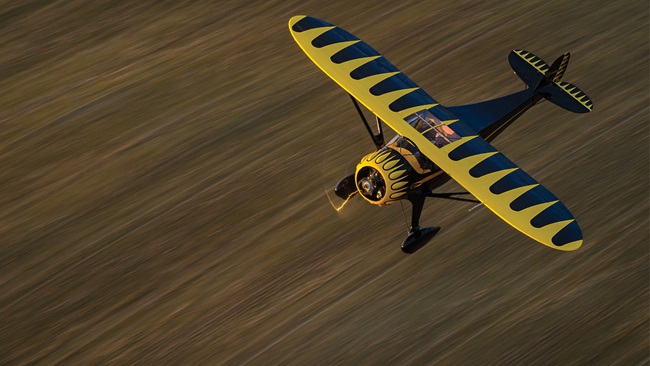Diamond 'doodle' wins aerial art competition
Brian Danza is an instrument-rated private pilot who likes to dabble in graphic design. So when he received an email inviting him to compete in the Wild Blue Doodle contest, a joint promotion of headset manufacturer Lightspeed Aviation and flight-debriefing technology producer CloudAhoy, the temptation was hard to resist.
The challenge posed to the competitors was this: Use the flight-tracking visualization features of CloudAhoy’s flight-debriefing technology product “to create incredible works of art in the sky.”
For Danza, who oversees the business operations of the news and opinion website The Daily Caller, there was an added incentive: a chance to replace his “nifty” 1998-vintage headset—dating to the year he earned his pilot certificate—with the first prize of a Lightspeed Zulu 3 headset, and a complimentary annual subscription to CloudAhoy.
“I figured I could probably chop up a photo of a plane and get waypoints out of it,” he said.
Danza took a photo of a DA40 and charted the image’s outline in Google Earth, using the program’s path-tracing feature to create waypoints. He used a text editor to shorten the waypoints’ standard KML file names and then exported the waypoints, saved to an SD card, to the aircraft’s navigation system as a flyable sequence. That method provided a slick solution to getting the route from Google Earth into the aircraft's navigation system—the part of the project he thought might be the most technically challenging, he said.
The method did pose one technical challenge that would have to be dealt with manually in flight. The aircraft’s navigation system accepted all the user-generated waypoints, but would only allow 100 of them in a flight plan, so Danza would have to add the missing waypoints—about 130 in all—as he flew the route.
Also, because of the route’s meandering form, some waypoints would be miles apart, while others were only a few hundred yards apart, requiring some nimble flying and airspeed changes.
Danza flew his mission, which you can follow in this video, on Sept. 16, departing Leesburg and flying west beneath the Washington, D.C., Class B airspace until he was able to climb to 3,500 feet to produce his aviation art beneath scattered-to-broken clouds.
Traffic identified and reported by the airplane’s Automatic Dependent Surveillance-Broadcast In (ADS-B In) equipment was heavy during the approximately hour-long flight—even including a flight of four Van's Aircraft RV airplanes that crossed his path, destination unknown, and visible on his video.
Fortunately, Danza never had to deviate from his route, which might have spoiled the image he was tracing in the sky.
In mid-October Danza was notified that he had won the contest, the 167 votes he received for his “Diamond in the Sky” creation topping runner-up Chad Davis’s “Let’s Play!” by 29 votes.
Time to retire that old headset.
“The process was really fun,” Danza said.




